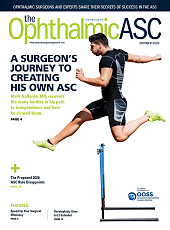Patients in the phase 1/2a RIOJA trial evaluating Tiespectus (MK-8748) for macular edema secondary to branch retinal vein occlusion (BRVO) demonstrated a mean gain of 16.7 letters in best-corrected visual acuity (BCVA) and a mean central subfield thickness (CST) reduction of 157.8 µm at 12 weeks, according to data presented at Eyecelerator 2025 in Orlando, Florida.
The first-in-human, multiple ascending dose study enrolled 12 treatment-naïve patients across 4 sequential cohorts. Baseline measurements included a mean BCVA of 55.6 letters and a mean CST of 479.3 µm. Patients received 3 monthly intravitreal injections of Tiespectus. Gains in visual function (Figure 1) and retinal anatomy were observed across all dose levels. No serious ocular or systemic adverse events occurred, and no dose-limiting toxicity was reported.

Figure 1. Mean change in best-corrected visual acuity from baseline in the phase 1/2a RIOJA trial of Tiespectus for macular edema secondary to branch retinal vein occlusion, showing a 16.7-letter gain after 3 monthly doses.
“We’re thrilled to share first-time data for Tiespectus, our investigational bispecific antibody with a dual mechanism that directly agonizes Tie2 while inhibiting VEGF to stabilize retinal and choroidal blood vessels (Figure 2), thereby eliminating macular fluid in retinal vascular disease,” said Charles G. Miller, MD, associate vice president for clinical development at EyeBio, a wholly owned subsidiary of Merck. “Based on results from RIOJA, we plan to initiate late-stage clinical trials for Tiespectus next year. RP

Figure 2. Mechanism of action of Tiespectus, an investigational bispecific antibody that both activates Tie2 signaling and inhibits VEGF, working to stabilize retinal and choroidal blood vessels and reduce macular fluid in retinal vascular disease.








